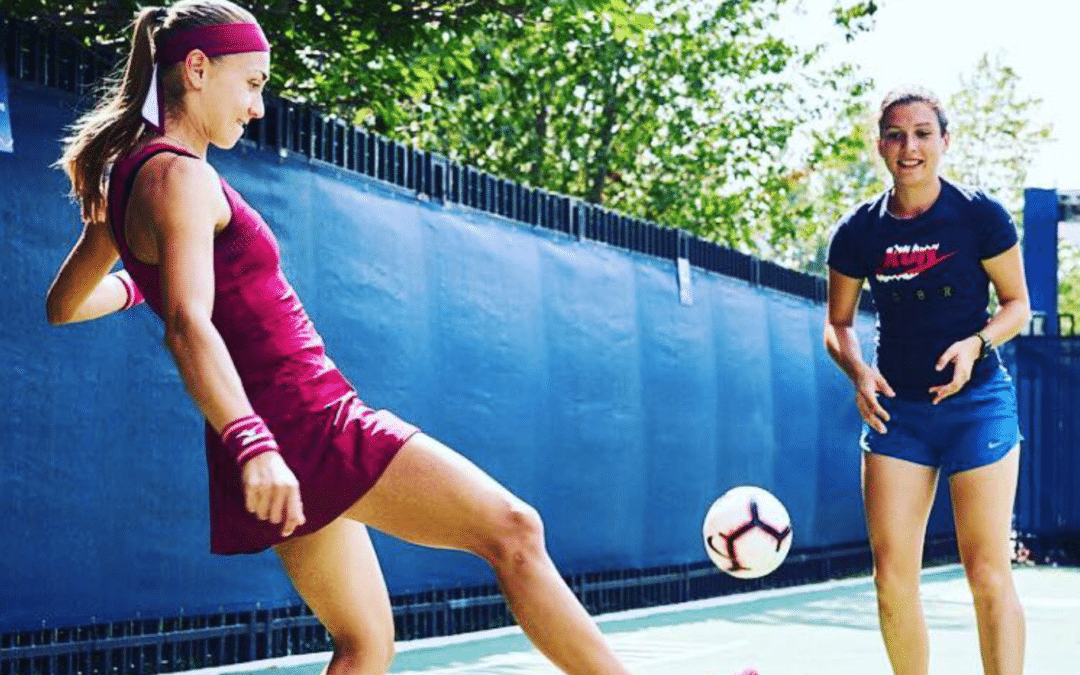Aside from those who are extremely lucky, injury is a hurdle the majority of tennis players will have to overcome at some point throughout their careers. However, the recovery process is far more complex than most athletes realize.
Laura Legoupil, a physiotherapist who has worked with WTA players Alexa Glatch and Aleksandra Krunic, will be delivering a presentation at the WTCA Conference UK in Eastbourne, which will focus on how athletes can best recover after injury.
For Legoupil, helping a player recover to full-strength after injury is a practical process. Most importantly, she stresses the importance of testing the athlete. “If you don’t test your athlete, you do not know how to progress in the rehab and in the strength program. Testing is always how I start with a player. If the player has pain when they are running, it doesn’t make sense to make them run,” she explained.
After the injury occurs, Legoupil will begin with basic tests that aim to measure mobility, stability and strength. Particularly, it is vital to test muscle-specific strengths, while also looking at the athlete’s compensation patterns as a whole.
If the physical therapist has been working with the athlete prior to the injury, they can rely on previous testing to see how the athlete is progressing throughout the recovery process. However, if no measures have been taken, they can always utilize scientific literature regarding the metrics of analysis.
Whatever the case may be, Legoupil urges other physical therapists to evaluate both sides of the body in relation to the point of injury. “It’s really important to compare the injured side of the body with the uninjured side. If the injury is on the right side, you have to compare it to the left side,” she explained.
When working back to full-strength following an injury, it is also imperative for athletes to resist the urge to come back too quickly. “There are some recovery timelines you cannot break because the body needs to recover,” said Legoupil. “If the athlete comes back too soon, this will create an inflammatory response, which can be counterproductive because there will be increased pain, which will block the recovery.”
Legoupil also stresses the importance of listening to the athlete throughout the recovery process. “Sometimes your player is doing really good in the gym, but when you take them back out on the court, they have a fear of doing certain movements, especially when they hurt themselves on the court,” she said.
“It’s important to show the athlete that they can do it, but you also have to listen to what they are feeling. Sometimes you have good results, but the athlete is not mentally ready to compete. For me, it’s about both testing and what the athlete is telling you,” Legoupil explained.
Above all, Legoupil notes that athletes should aim to return to the court as soon as possible without putting undue stress on the injury. “At the end of the day, it’s about tennis, not doing great in the gym. It’s important to talk with the tennis coach and see what can be done without any movement. Some players with ACL sprains are able to hit a ball after a few weeks while sitting on the bench. It’s important to bring your athlete back on the court very soon,” she said.
Finally, Legoupil encourages athletes and physical therapists to deliver the correct amount of intensity at the correct time. “If you apply too much intensity from the beginning, this could cause inflammatory response and pain. On the contrary, if you don’t put enough intensity in what you are doing, the athlete can’t respond to the training. It’s really important to be in the middle, not too high but not too low either,” she explained.

